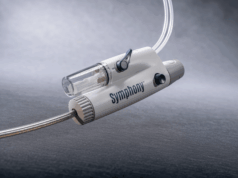
A multicentre study has confirmed the effectiveness of intermittent pneumatic compression systems in reducing the incidence of deep vein thrombosis following a stroke. According to a press release, incidence could be reduced by 29%.
In the trial, 8.5% of stroke patients using intermittent pneumatic compression devices developed deep vein thrombosis, as opposed to 12.1% in those treated normally.
Intermittent pneumatic compression systems are, according to the press release, already widely used for patients undergoing surgery within hospitals in the UK but these results imply that these systems can now play an even bigger role in reducing the risk of deep vein thrombosis.
In the press release the G+N Medical PneumaPress system was said to provide gradient, sequential, intermittent pneumatic compression, which accordingly increases the velocity of blood and decreases stasis within deep veins of immobile patients such as those with strokes or undergoing general anaesthesia and reduces their risk of developing a deep vein thrombosis.
The PneumaPress cuffs can be used singularly or bilaterally, with either two similar or two different options, it was said in the press release. This means controllable intermittent pressure could be applied to one or two legs and/or different parts of each leg at the same time (eg. calf and foot).
The disposable cuffs were said to be comfortable for the patient and the controller is quiet (60Db).
The system controller features a large, easy-to-interpret display which provides digital and pictorial confirmation of the selected cuffs, and the pressure and time cycles whilst it is in use.









